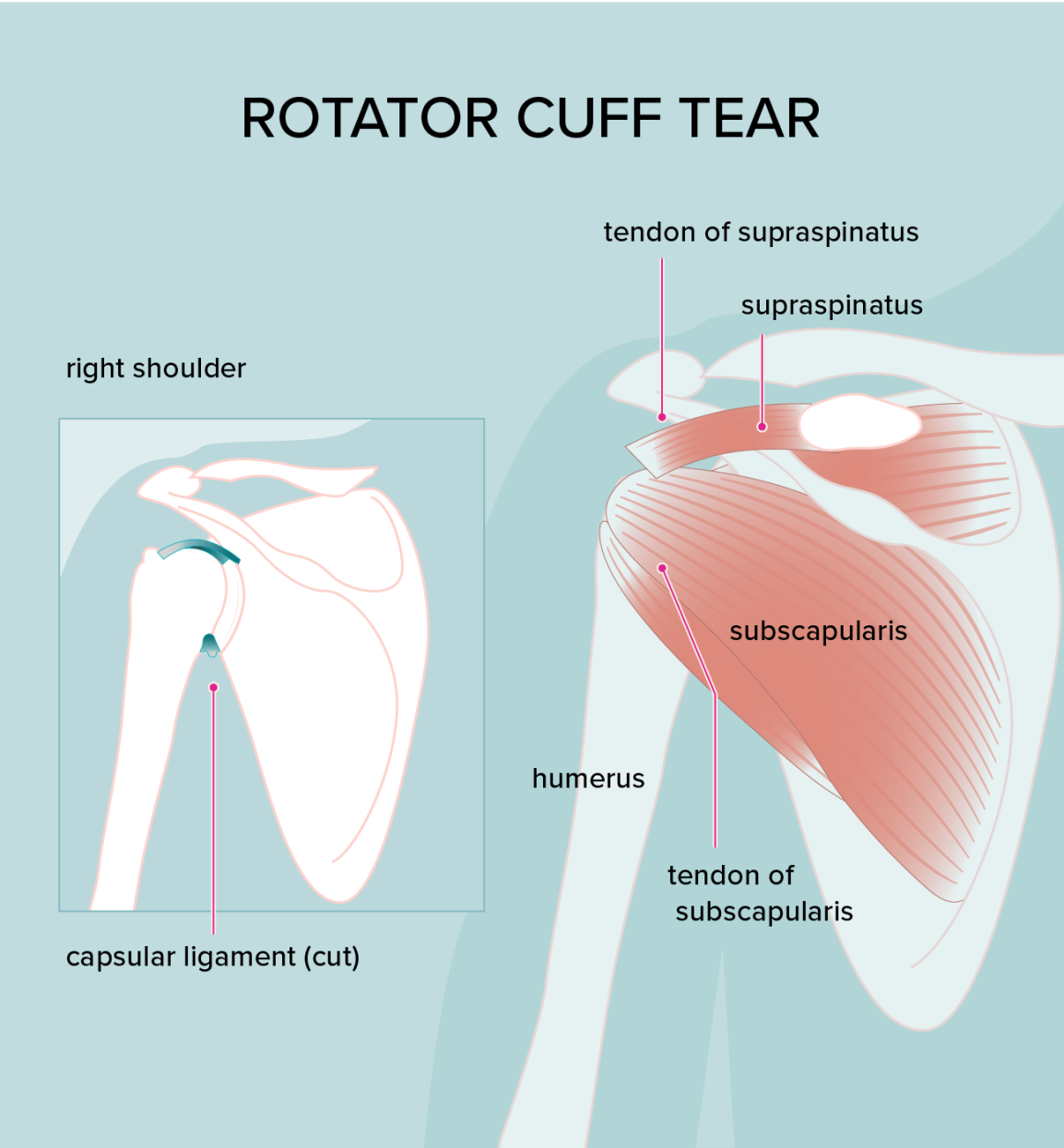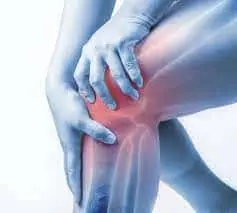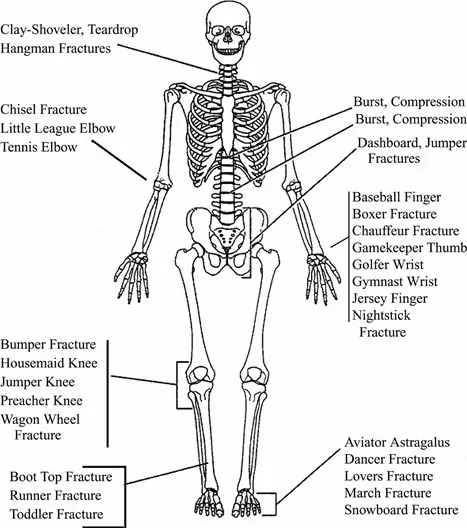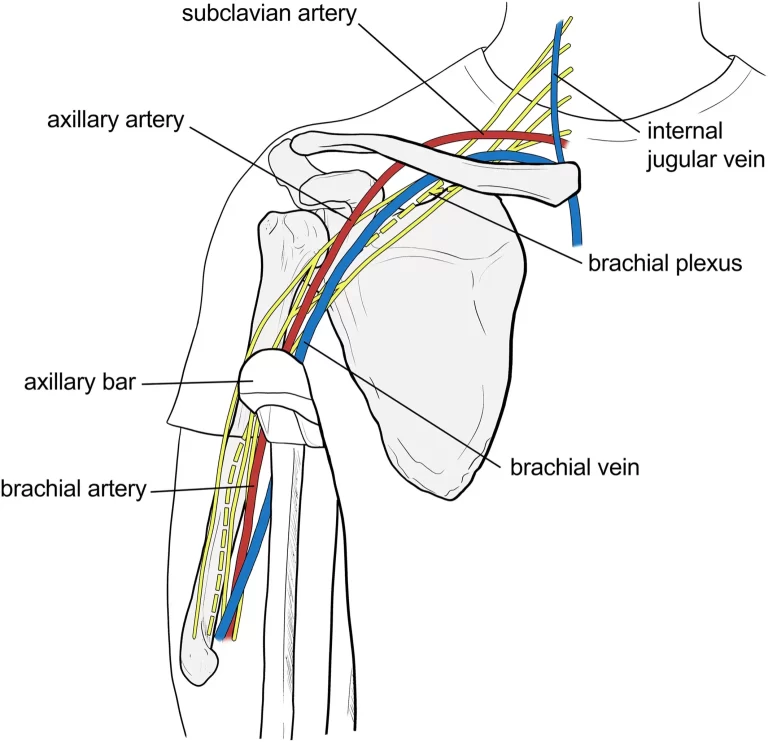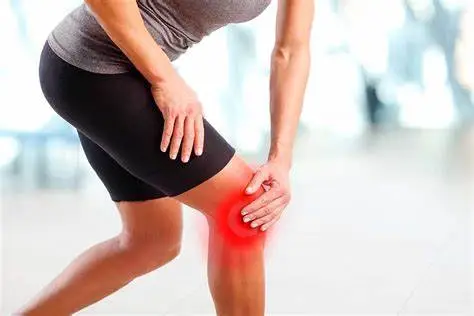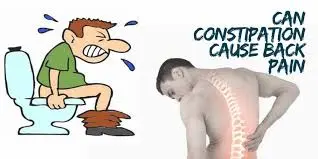Rotator Cuff Tear
What is a Rotator cuff tear?
A Rotator Cuff Tear can occur due to various reasons, including overuse, injury, or degeneration over time. This tear can lead to pain, weakness, and limited range of motion in the affected shoulder.
The rotator cuff is a group of muscles and tendons in the shoulder joint that help stabilize the shoulder and facilitate its movement.
Treatment options may include rest, physical therapy, or in severe cases, surgical intervention. Early diagnosis and appropriate management are crucial for restoring function and preventing further complications associated with rotator cuff tears.
- Adults who experience shoulder pain and incapacity frequently have tears in their rotator cuffs. Over 2 million Americans see their doctors annually due to tears in their rotator cuffs.
- A rotator cuff tear might make your shoulder weaker. This suggests that doing commonplace chores, including combing your hair or putting on clothes, might become difficult and painful.
Anatomy of Rotator cuff tear:
- The three bones that make up your shoulder are the clavicle, or collarbone, scapula, or shoulder blade, and humerus, or upper arm bone. The joint at the shoulder is a ball and socket: The upper arm bone’s head, or ball, rests in a shallow socket in the shoulder blade.
- Four muscles work together as tendons to create the rotator cuff, which surrounds the humerus’ head. Your arm may be raised and rotated with the assistance of the rotator cuff, which joins the humerus to the shoulder blade.
- The bursa, a lubricating sac, is located between the rotator cuff and the acromion, the upper shoulder bone. The bursa allows the rotator cuff tendons to flow freely as you rotate your arm. This bursa can also become inflamed and uncomfortable when the rotator cuff tendons are compromised.
Description of Rotator cuff tear:
- The rotator cuff tendon can separate from the humeral head whole or partly when one or more of the tendons are damaged.
- While the supraspinatus tendon sustains the majority of rips, the rotator cuff may also sustain tears in other places.
- Tearing is often the first sign of damaged tendons. The tendon may rupture as the injury worsens, occasionally when lifting a large object.
There are different types of tears.
- Partial tear: The tendon and bone are not entirely separated by this kind of injury. The reason it’s named partial is that the tear only passes through a portion of the tendon’s thickness. Though it is thinner, the tendon is still joined to the bone.
- Full-thickness tear: A portion of the tendon separates from the bone in this kind of injury.
An incomplete tear that has full thickness occurs when a tendon only partially separates from the bone. - A full-thickness complete tear occurs when a tendon is separated from the bone. A full-thickness total tear leaves the tendon with a hole in it.
Causes of Rotator cuff tear:
The two primary reasons why people have rotator cuff tears are age (degeneration) and accident.
- Acute Tear:
- Your rotator cuff may be torn if you stumble and injure it, or if you suddenly lift something heavy. This kind of tear can happen in conjunction with other wounds like a fractured wrist, a dislocated shoulder, or a broken collarbone.
- Degenerative (Wear-Related) Tear:
- The majority of tears are caused by the tendon gradually deteriorating over time. As we age, this deterioration happens naturally and is usually not very painful.
- The dominant arm, which you like to use for the majority of chores, is more likely to suffer from rotator cuff injuries. Even in the absence of any discomfort in the affected shoulder, there is a higher chance of developing a rotator cuff tear in the opposite shoulder if you have a degenerative tear in one of them.
- Degenerative or chronic rotator cuff tears are caused by many reasons.
- Repetitive stress: Stressing out your rotator cuff muscles and tendons can result from repeatedly performing the same shoulder actions. Exercises like weightlifting, tennis, baseball, and rowing can all increase your chance of overuse tears. Overuse of tears can also be a result of several occupations and daily tasks.
- Lack of blood supply: The blood flow to our rotator cuff tendons decreases with age. The body’s natural capacity to repair tendon injury is compromised in the absence of a healthy blood supply. In the end, this may result in a tendon tear.
Risk factors of Rotator cuff tear:
- People over 40 are more prone to rotator cuff injuries since most of them are the result of regular wear and strain associated with aging.
- Individuals who engage in overhead or repeated lifting exercises have the additional risk of rotator cuff injuries. Tennis players and baseball pitchers are two sportsmen who are particularly susceptible to overuse tears. Those who perform overhead labor, like painters and carpenters, are also more prone to weep.
- While younger individuals can have overuse tears from sports or overhead work, the majority of tears in young adults are the result of severe injuries like falls.
Symptoms of Rotator cuff tear:
- The most common indications of a rotator cuff injury are as follows:
- Pain during the day and at night, especially while resting on the injured shoulder
Pain with particular motions or while raising and lowering your arm
weakness in your arm when you raise or rotate it
There may be a crackling sound, or crepitus when you move your shoulder in specific ways.
Unexpected tears, such as those after a fall, typically hurt a lot. Your upper arm may feel like it’s cracking and become feeble right away. - Arm weakness and discomfort can also result from slow-developing tears caused by overuse. When you raise your arm, you can have shoulder pain or pain that travels down your arm.
- When you initially lift your arm over your head, such as when reaching inside a closet, the discomfort could be slight. Pain relief over-the-counter drugs such as aspirin, ibuprofen, or naproxen may help.
- With time, the pain could become more evident while you’re not moving and might stop responding to treatment. Lying on the troublesome side at night may cause you discomfort. Routine tasks like reaching behind your back or brushing your hair may become more challenging due to shoulder discomfort and weakness.
- It is important to remember that not all rotator cuff injuries hurt. Nevertheless, arm weakness and other symptoms might still be caused by these tears.
Diagnosis
Doctor examination of Rotator cuff tear:
Medical History and Physical Examination:
- Your doctor will check your shoulder following a discussion of your symptoms and medical background.
- They will examine it to determine if there is a deformity or if any areas are sore.
To find your shoulder’s range of motion, they will ask you to move your arm in a variety of ways.
Your arm strength will be tested by them.
They will examine your shoulder joint to look for further issues.
To rule out other disorders like arthritis and to confirm that the discomfort is not being caused by a pinched nerve, they may additionally check your neck.
Imaging Tests:
- Your doctor may order further tests to assist confirm your diagnosis, such as:
- X-rays: Radiology exams often begin with X-rays. Plain X-rays of a shoulder with rotator cuff pain are often normal and may reveal a tiny bone spur, which is a common result. This is because X-rays do not show the soft tissues of the shoulder, such as the rotator cuff. X-rays are used to rule out other possible causes of your shoulder pain, such as arthritis.
- Magnetic resonance imaging (MRI) or ultrasound: An X-ray is not as good at showing soft tissues as an MRI, such as the rotator cuff tendons. It can display the amount of the rotator cuff tear as well as its location inside the tendon. Due to its ability to display the quality of the rotator cuff muscles, an MRI can also help your doctor determine how recent or old a rupture is.
Treatment of Rotator cuff tear:
- If you continue to utilize your rotator cuff despite growing pain, you run the risk of aggravating the injury. Over time, a rotator cuff injury may enlarge.
- Seeing your doctor is a smart idea if you have persistent arm and shoulder discomfort. You can stop the worsening of your symptoms with early therapy. Also, it will help you return to your regular schedule more quickly.
- Any therapy works to lessen discomfort and restore function. There are several treatment choices for a rotator cuff injury, and each person will respond differently to the optimal one. When organizing your care, your physician will take into account:
- Your age
- Your activity level
- Your general health
- The type of tear you have
- There is no proof that surgery done soon after the accident produces better results than surgery done later. For this reason, while treating rotator cuff issues, many medical professionals first suggest physical therapy and other nonsurgical measures.
Nonsurgical Treatment:
- Nonsurgical therapy reduces pain and enhances shoulder function in 80–85% of patients.
- Nonsurgical treatment options may include:
- Rest: Your physician could advise rest and reducing strenuous activity.
- Activity modification: Stay away from any activities that hurt your shoulders.
- Nonsteroidal anti-inflammatory drugs (NSAIDs): Aspirin, naproxen, and ibuprofen are examples of anti-inflammatory medications that help lessen pain and swelling.
- Strengthening exercises and physical therapy: You can strengthen and recover mobility in your shoulder with certain workouts. Stretches will be part of your exercise routine to increase your range of motion and flexibility. Your shoulder’s supporting muscles can be strengthened to reduce discomfort and stop more damage.
- Steroid injection: An injection of cortisone plus a local anesthetic may be beneficial if rest, medicine, and physical therapy are insufficient to treat your discomfort. Although cortisone is a very powerful anti-inflammatory drug, not all people respond well to it. Furthermore, there’s no way of knowing how long the benefits will remain if it works for you; it might be weeks, months, years, or even the rest of your life. Approximately two-thirds of patients may anticipate pain alleviation after injections lasting a minimum of three months on average.
- The main benefit of nonsurgical therapy is that it eliminates the main dangers associated with surgery, including:
- Infection
- Permanent stiffness
- Anesthesia complications
- Sometimes lengthy recovery time
The disadvantages of nonsurgical treatment are:
- Over time, the tear’s size might grow.
- Activities might need to be restricted.
Surgical Treatment:
- If nonsurgical measures do not relieve your discomfort, your doctor may suggest surgery. The primary reason for surgery is persistent discomfort. But, if you engage in sports or overhead labor with your arms, or if you are an active person, your doctor could also recommend surgery.
- Additional indications that you could benefit from surgery include:
- Your six to twelve-month symptoms have persisted.
Your rip is substantial (greater than 3 cm), and the surrounding tissue is in good condition.
Your shoulder is completely paralyzed and extremely feeble.
Your tear was caused by an intense, recent injury.
In order to rebuild a damaged rotator cuff, the tendon is often reattached to the humerus, or upper arm bone. Rotator cuff tears can be repaired in some different ways. You and your orthopedic surgeon will talk about the best course of action for your unique set of medical requirements.
Physical therapy treatment of rotator cuff tear:
- For the majority of rotator cuff injuries, conservative care is necessary. Non-surgical treatment options may also include massage, cold or heat application, time, local rest, steroid injections, non-steroidal anti-inflammatory medications, and physical therapy. In the early stages, it may be beneficial to sparingly provide three to four injections of steroids into the subacromial area or around the biceps tendon.
- It is crucial to separate the specific rotator cuff muscles as much as possible during testing and therapy. This is due to the possibility of rotator cuff muscular atrophies, injuries, or exhaustion. When physical therapy is incorporated into a treatment plan, it is useful.
Goals to be achieved with physical therapy:
- lowering discomfort and tension in the neck and scapular regions to encourage scapular mobility. This is to guarantee that the glenoid is positioned correctly. The levator scapulae, upper trapezius, and pectoralis minor are the muscles that are addressed.
- restoring scapulohumeral mobility by correcting an incorrect humeral head posture.
- Boost the strength of the rotator cuff muscles that are still intact, the upper serratus anterior, and the muscles that support and move the shoulder.
- Regain movement automatism and proprioception with neuromotor rehabilitation
The following guidelines apply to both postoperative and nonoperative rotator cuff rehabilitation.
lowering of the burden and complete arm rehabilitation
- No compensating movements in the upper limbs should be made.
- To strengthen the elbow, forearm, and wrist, it is recommended to utilize them swiftly. particularly during protracted immobility.
- It is recommended to mobilize the scapulothoracic joint and strengthen the scapular stabilizers submaximally. Inappropriate stressing or loading should not be applied to the wounded tissues.
- Scapular protraction and retraction resistance training is one strategy employed early in the recovery period. To prevent tension on the glenohumeral joint while resisting scapular protraction and retraction, one must lie on one’s side. Low resistance is used to start this workout. During scapular motion, the glenohumeral joint has to be in forward flexion and modest abduction.
Restoration of normal joint arthrokinematics:
- To increase the internal rotation range of motion, posterior capsular mobilization and stretching procedures are frequently recommended.
Enhancement of muscle balance, strength, and localized muscular endurance
Exercise of open chain method:
Side-lying external rotation:

With a little cushion placed between the affected arm and torso, lie on your side that is not affected. Raise the affected arm into the external rotation while maintaining the elbow bent and fixed to the side. Lower to the starting position gradually, then repeat.
Shoulder extension:
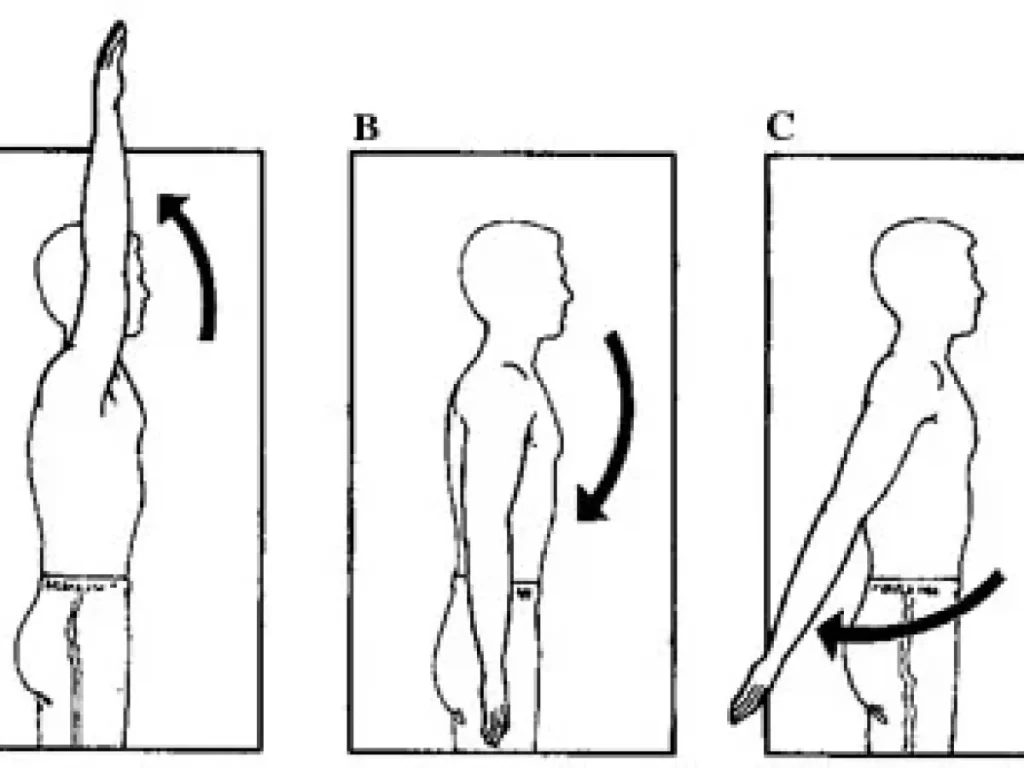
Lie in the prone position on a table. The arm in question is dangling straight down to the ground. Raise the arm straight back towards your hip while pointing the thumb outward. Slowly lower the arm and repeat.
Prone horizontal abduction:
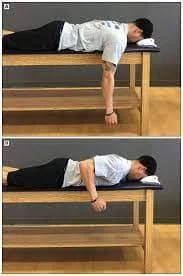
Using a table, lie prone with the affected arm hanging straight to the floor. Raise the arm out to the side, parallel to the floor, with the thumb pointing outward. Lower the arm slowly and repeat.
90/90 external rotation:
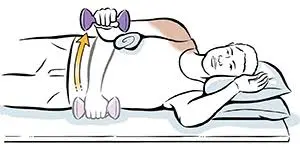
Place yourself face down on a table. The arm is supported by the table, and the shoulder is abducted to a 90° angle. The elbow is 90 degrees bent. Rotate the arm in an external rotation while maintaining a fixed shoulder and elbow. Lower to the starting position gradually, then repeat.
Example of close chain method:
- With the patient’s shoulder in the scapular plane and 90 degrees elevated, the therapist administers rhythmic stabilization or perturbation stresses.
- Proprioception training, gradual resistive strengthening, and sport-specific activities are part of the last phases of rotator cuff injury therapy. Patients whose major complaint is shoulder discomfort may experience a considerable reduction in pain and impairment following thrust and non-thrust manipulation (TSTM) of the cervicothoracic spine and/or ribs. It is possible to characterize the application of TSTM in shoulder patients as the restoration of motion between neighboring vertebrae. This is recognizable as a reflexogenic system.TSTM can enhance general functional performance in addition to shoulder mobility.
What is the rotator cuff tear recovery time?
- Your arm must be immobilized in a sling for four to six weeks following surgery. After that, you can begin physical therapy. After surgery, most patients regain strength and function in their shoulders in four to six months, although complete recovery might take up to 18 months.
Summary
Adults who experience shoulder discomfort and incapacity frequently have tears in their rotator cuffs. Over 2 million Americans see their doctors annually due to tears in their rotator cuffs.
A rotator cuff tear might make your shoulder weaker. This suggests that doing some commonplace chores, including combing your hair or putting on clothes, might become difficult and painful.
FAQ:
Does a tear in the rotator cuff repair itself?
A rotator cuff injury typically cannot heal by itself. See a shoulder specialist if conservative measures like physical therapy and steroid injections don’t relieve your pain and other symptoms. To reduce shoulder discomfort and restore function, surgical surgery is frequently required.
Is a tear in the rotator cuff serious?
If left untreated, rotator cuff issues can result in a permanent loss of shoulder joint strength or range of motion.
Does non-surgical repair of a torn rotator cuff occur?
Relieving discomfort and restoring shoulder strength are the main objectives of therapy. Although most tears cannot be mended independently, surgery is frequently unnecessary to ensure excellent function.
Can someone with a torn rotator cuff lead a regular life?
Naturally, this depends on the amount and location of the tear, but the majority of rotator cuff tears occur in the crescent and the supraspinatus tendon, which are the upper rotator cuff muscles. These rips are readily treated without surgery and do not need a lifetime of discomfort or impairment.
If it aches, should I still work out my rotator cuff?
Prepare to take a break from lifting weights at the gym if you suffer from a rotator cuff injury. Lifting weights over your head or out from the sides of your body is not recommended. These motions run the risk of aggravating the ailment and adding to its stress.

